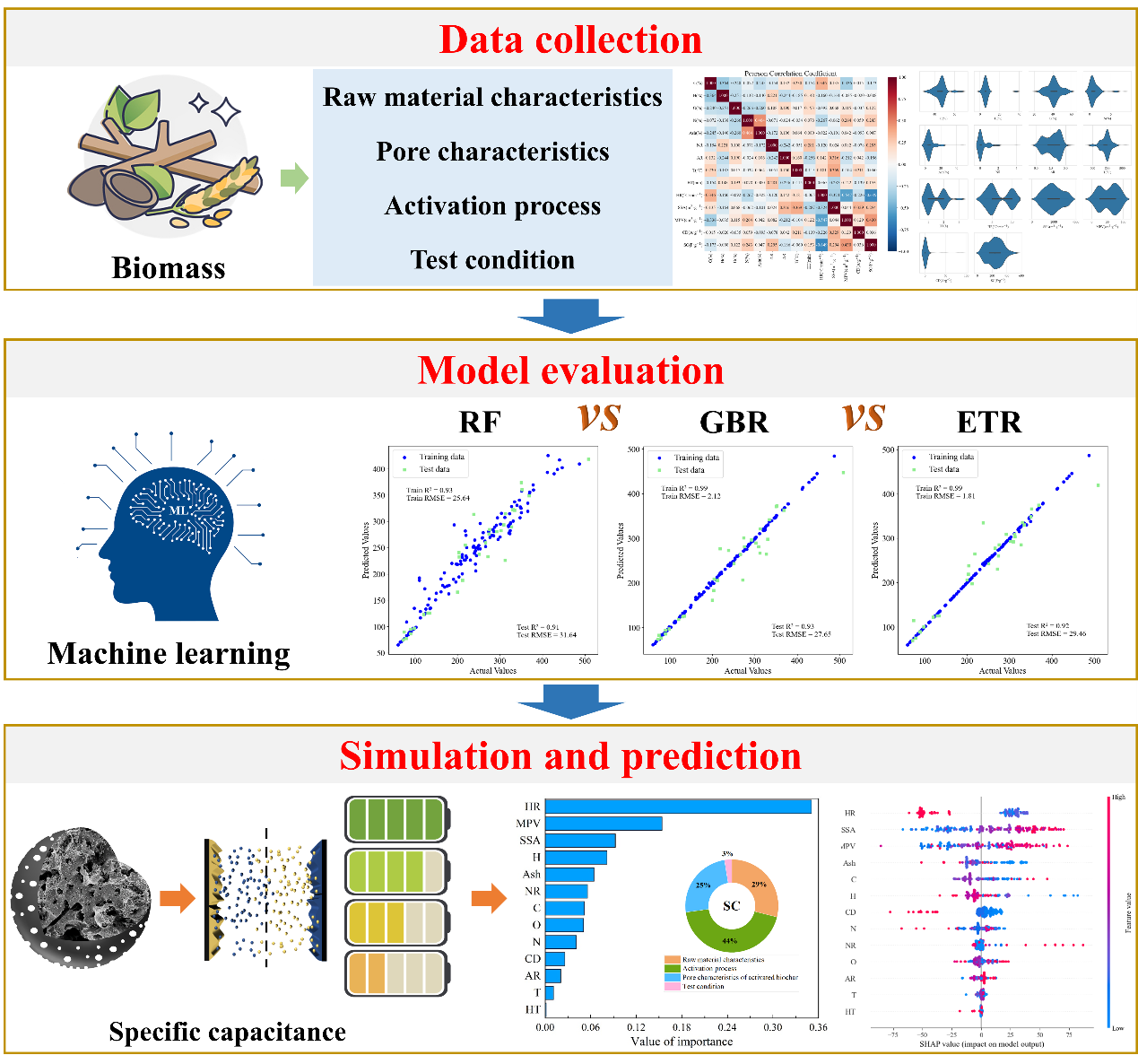Recently, the Clean Conversion and High-value Utilization of Farming Waste Team at the Institute of Environment and Sustainable Development in Agriculture (IEDA), Chinese Academy of Agricultural Sciences (CAAS) made new progress in the research on straw biochar-based energy storage materials. This study developed machine learning big data models, revealed the relationship between straw biochar materials and their energy storage characteristics, and optimized the preparation process for biochar-based energy storage materials. The related findings have been published on the Chemical Engineering Journal .

Relationship between biochar materials and their energy storage characteristics
Biochar is an ideal precursor for supercapacitor electrodes due to its renewability and unique physicochemical properties. The application of biochar to energy storage is conducive to the high-value utilization of biomass and the rapid development of renewable energy, and is of great significance to achieving China's "dual carbon" goals. However, the optimal preparation process can hardly be identified through traditional experiments due to the complexity of control over straw biochar preparation, and the relationship between physicochemical properties and energy storage is still unclear. Based on big data retrieval and analysis of biochar energy storage materials, the research team developed and optimized three machine learning models for the prediction of biochar preparation processes and energy storage characteristics, with a prediction accuracy of up to 0.93. Heating rate, proportion of micropores and specific surface area were the most important factors affecting the specific capacitance of biochar. The energy storage performance of biochar could be improved by increasing the activator amount and the activation temperature, reducing the activation time and the heating rate. The findings provide a theoretical basis and technical support for the application of straw biochar to energy storage.
Doctoral student Sun Yuxuan with the IEDA, CAAS is the first author of this paper, and Researcher Yao Zonglu is the corresponding author. This research was supported by China Agriculture Research System, the Agricultural Science and Technology Innovation Program of the Chinese Academy of Agricultural Sciences, and the National Natural Science Foundation of China.Linkage: https://doi.org/10.1016/j.cej.2024.149975

